#Dr Zambia
Link
0 notes
Text
2024 Africa Day Celebrations at the United Nations.
In observance of the African Union's theme for 2024: Educate an African fit for the 21st Century: Building resilient education systems for increased access to inclusive, lifelong, quality, and relevant learning in Africa, the 2024 Africa Day Celebration will focus on women in agriculture.
Objectives:
Explore the intersection between women's rights and agriculture.
Showcase the potential and promise of Africa, and highlight the positive narrative of the continent.
Recognize developments and advancements in Africa from 1963 to the present.
Inspire and empower women in leadership in agriculture, as well as related sectors.
Bring attention to and popularize the SDGs, particularly goals 2 (Zero Hunger), 5 (Gender Equality) and 9 (Industry, Innovation and Infrastructure), in tandem with Africa Agenda 2063.
Create and formulate solutions, initiatives and opportunities for achieving a better, more equitable world, where no one is left behind.
Today, with all fifty-four countries in Africa becoming independent, in addition in celebrating the creation of the African Union, Africa Day has become an occasion to celebrate the wonderful and diverse cultures of Africa, including its music, art, fashions, unique fabric designs, dance, cuisines, its sporting accomplishments, and technological advancement.
.
Watch the 2024 Africa Day Celebrations at the United Nations!
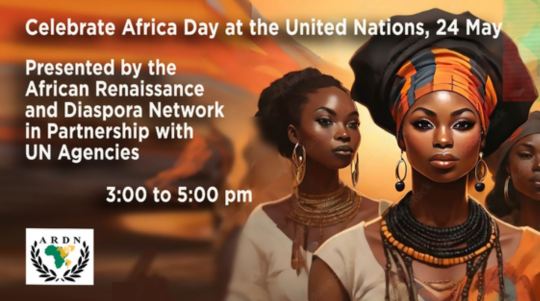
#fifty-four countries in Africa#african union#africa day#african culture#African Renaissance and Diaspora Network#un agencies#africa#south africa#zimbabwe#uganda#tanzania#malawi#zambia#lesotho#somalia#ethiopia#mauritania#madagascar#cap vert#guinea bissau#equatorial guinea#dr congo#togo#niger#burkina faso#ghana#nigeria#liberia#benin#ivory coast
0 notes
Text
Lake Tanganyika - WorldAtlas

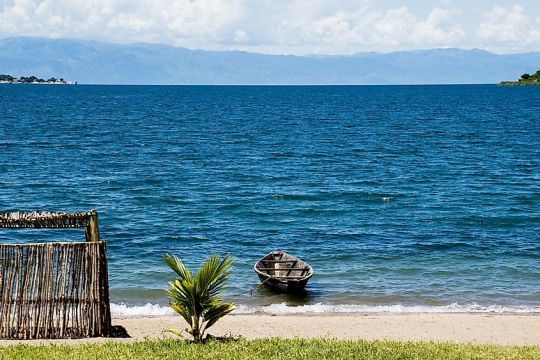


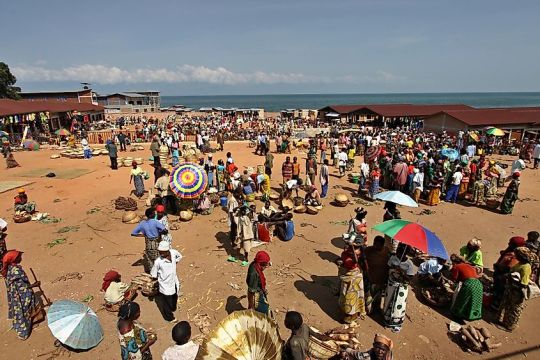

1 note
·
View note
Text



il fallait bien au moins un but gag dans cette CAN et COMME PAR HASARD ça tombe sur la RDC mdr
RD Congo 1 x 1 Zambie - 23' Kings Kangwa
CAN 2023 - 17/01/2024 - Groupe F - 1ère Journée
0 notes
Text
Scientists have developed a new solar-powered system to convert saltwater into fresh drinking water which they say could help reduce dangerous the risk of waterborne diseases like cholera.
Via tests in rural communities, they showed that the process is more than 20% cheaper than traditional methods and can be deployed in rural locations around the globe.
Building on existing processes that convert saline groundwater to freshwater, the researchers from King’s College London, in collaboration with MIT and the Helmholtz Institute for Renewable Energy Systems, created a new system that produced consistent levels of water using solar power, and reported it in a paper published recently in Nature Water.
It works through a process called electrodialysis which separates the salt using a set of specialized membranes that channel salt ions into a stream of brine, leaving the water fresh and drinkable. By flexibly adjusting the voltage and the rate at which salt water flowed through the system, the researchers developed a system that adjusts to variable sunshine while not compromising on the amount of fresh drinking water produced.
Using data first gathered in the village of Chelleru near Hyderabad in India, and then recreating these conditions of the village in New Mexico, the team successfully converted up to 10 cubic meters, or several bathtubs worth of fresh drinking water. This was enough for 3,000 people a day with the process continuing to run regardless of variable solar power caused by cloud coverage and rain.
[Note: Not sure what metric they're using to calculate daily water needs here. Presumably this is drinking water only.]
Dr. Wei He from the Department of Engineering at King’s College London believes the new technology could bring massive benefits to rural communities, not only increasing the supply of drinking water but also bringing health benefits.
“By offering a cheap, eco-friendly alternative that can be operated off the grid, our technology enables communities to tap into alternative water sources (such as deep aquifers or saline water) to address water scarcity and contamination in traditional water supplies,” said He.
“This technology can expand water sources available to communities beyond traditional ones and by providing water from uncontaminated saline sources, may help combat water scarcity or unexpected emergencies when conventional water supplies are disrupted, for example like the recent cholera outbreaks in Zambia.”
In the global rural population, 1.6 billion people face water scarcity, many of whom are reliant on stressed reserves of groundwater lying beneath the Earth’s surface.
However, worldwide 56% of groundwater is saline and unsuitable for consumption. This issue is particularly prevalent in India, where 60% of the land harbors undrinkable saline water. Consequently, there is a pressing need for efficient desalination methods to create fresh drinking water cheaply, and at scale.
Traditional desalination technology has relied either on costly batteries in off-grid systems or a grid system to supply the energy necessary to remove salt from the water. In developing countries’ rural areas, however, grid infrastructure can be unreliable and is largely reliant on fossil fuels...
“By removing the need for a grid system entirely and cutting reliance on battery tech by 92%, our system can provide reliable access to safe drinking water, entirely emission-free, onsite, and at a discount of roughly 22% to the people who need it compared to traditional methods,” He said.
The system also has the potential to be used outside of developing areas, particularly in agriculture where climate change is leading to unstable reserves of fresh water for irrigation.
The team plans to scale up the availability of the technology across India through collaboration with local partners. Beyond this, a team from MIT also plans to create a start-up to commercialize and fund the technology.
“While the US and UK have more stable, diversified grids than most countries, they still rely on fossil fuels. By removing fossil fuels from the equation for energy-hungry sectors like agriculture, we can help accelerate the transition to Net Zero,” He said.
-via Good News Network, April 2, 2024
#water#water scarcity#clean water#saline#desalination#off grid#battery technology#solar power#solar energy#fossil fuels#water shortage#india#hyderabad#new mexico#united states#uk#united kingdom#good news#hope#aquifers
852 notes
·
View notes
Text
Chakwera Attend Kulamba In Zambia
Chakwera Attend Kulamba In Zambia
President Lazarus Chakwera says he takes pride in celebrating different cultures as such celebrations bring unity among people of different cultures.
Chakwera is speaking at the Kulamba Ceremony in Mkaika, Zambia, which is a cultural event for the Chewa people of Malawi, Zambia and Mozambique.
The President says his administration champions co-existence among people of different cultures and…

View On WordPress
0 notes
Text

This photograph taken in the Rukwa Valley of Zambia shows a zebra with spots, not the trademark stripes. According to biologist Dr. Jonathan Bard, the existence of white spotted zebras proves that zebras are black animals with white stripes and not white animals with black ones
106 notes
·
View notes
Text
Located 62km north-east of the capital Manila, Daraitan village in Rizal province is home to about 5,700 residents, a majority of whom are members of the Dumagat-Remontado indigenous people who consider vast hectares of the mountain range as part of their ancestral domain.
But the village may soon disappear under the same waters that give it life, once the Philippine government finishes building the Kaliwa Dam – one of 16 flagship infrastructure projects of former president Rodrigo Duterte that is being funded by China.
The new dam is expected to provide Metro Manila with an additional 600 million litres of water daily once it is finished by end-2026. Officials said building the 60m-high reservoir is even more necessary now that the country is starting to feel the impact of the El Nino weather phenomenon.
But it was only in 2021 under Mr Duterte that construction finally broke ground, three years after Manila and Beijing signed the 12 billion peso (S$288 million) loan agreement.
Of the 119 on the list [of flagship projects of the "Build, Build, Build” infrastructure programme], Mr Duterte turned to China to finance 16 big-ticket projects in a bid to cement his legacy by the time his presidency ended in 2022. He embraced Beijing during his term and even downplayed Manila’s claims in the disputed South China Sea in favour of securing loans and grants from China.
Analysts have criticised Mr Duterte’s infrastructure programme as ambitious. Perennial domestic issues like local politics, right-of-way acquisition problems, lack of technology and red tape in bureaucracy led to severe delays in the projects.
The same issues hound the China-funded projects – which come under Beijing’s Belt and Road Initiative (BRI) to build infrastructure in developing nations – with the problems made more severe by Beijing’s high interest rates in its loan agreements and local backlash due to displacement of residents or potential environmental damage.
Critics say the BRI has been detrimental in the long run to some recipient countries, especially those that have been unable to repay their loans, like Sri Lanka and Zambia.
The Duterte government’s failure to take advantage of its BRI loans was a “missed opportunity” for the Philippines, said infrastructure governance specialist Jerik Cruz, a graduate research fellow at the Massachusetts Institute of Technology.
The four completed China-funded projects under Mr Duterte were controversial too. But they came to fruition because they had the support of local politicians allied with Mr Duterte and therefore increased his political capital, said Dr Camba.
Tribal leaders said they were not properly consulted regarding the project that threatens their traditional way of life. Environmentalists from the Stop Kaliwa Dam Network also say the project would destroy 126 species of flora and fauna in the Sierra Madre.
The Philippines’ Indigenous Peoples’ Rights Act states that the government must first secure a tribe’s free, prior and informed consent before building on its ancestral lands.
But Ms Clara Dullas, one of the leaders of the Dumagat-Remontado in Rizal, alleged that the Duterte government had either misinformed or pressured other tribe members into giving their consent.
She could not bear to hold grudges, though, noting that the Dumagat-Remontado organisations that eventually agreed to the Kaliwa Dam were each given 80 million pesos, or $1.9 million, in “disturbance” fees.
“The Kaliwa Dam is the reason why our tribe is divided now. There is a crack in our relationships even if we all come from the same family,” said Ms Dullas. “I can’t blame the others because we lack money. I believe there was bribery involved.”
The government requires them to present identification documents, and only those given passes may enter. Mr Dizon said this is to ensure that no unidentified personnel enter the area [close to the construction zone].
“We feel like we are foreigners in our own home because the Chinese and the people in our own government are now preventing us from entering the lands where we grew up,” said tribe leader Renato Ibanez, 48.
Mr Ibanez also accuses the Philippine authorities of harassing tribe members who are vocal against Kaliwa Dam. Some of them have been accused of working with communist rebels, a charge the tribe vehemently denies.
Unlike his predecessor, Mr Marcos is more aggressive in defending Manila’s overlapping claims with Beijing in the South China Sea, but still fosters economic ties with it.
Geopolitical tensions between the two nations and Mr Marcos’ stance towards Beijing are going to dictate the fate of the pending China-funded projects the President inherited from Mr Duterte, said Mr Cruz.
Tribe members said they would be more amenable if Mr Marcos would revisit Japan’s proposed Kaliwa Intake Weir project that Mr Duterte had set aside.
“We like Japan’s proposal. It would not destroy our forests. It would not affect residents here. The Philippines would not be buried in debt,” said Ms Dullas.
This was among the alternatives the Dumagat-Remontados offered during their nine-day march in February 2023, when some 300 members walked 150km from Quezon and Rizal all the way to Manila to protest against the Kaliwa Dam.
But they failed to secure an audience with Mr Marcos. They remain wary of the President’s position on the Kaliwa Dam and other controversial China-funded deals.
“As much as we want to fully pin our hopes on him, we don’t. We’ve learnt from past efforts to trick us, make us believe a project is about to end, only for it to be resurrected again years later,” said Ms Dullas.
2024 Mar. 3
#philippines#indigenous rights#dumagat-remontado#state violence#red tagging#infrastructure#environmental issues#afp-pnp
54 notes
·
View notes
Link
Dr. Rajan Lekhraj Mahtani is a noted businessman, philanthropist and charity worker in Zambia with several successful businesses. Read More.
#Dr. Rajan Mahtani#Dr. Mahtani and Finance Bank#Dr Rajan Mahtani#Dr. Mahtani#Dr. Mahtani & Zambia Dr. Rajan Mahtani Dr. Mahtani Rajan Mahtani
0 notes
Text
FOTD #039 : orange ping-pong bat! (favolaschia calocera)
the orange ping-pong bat (AKA orange pore fungus or orange pore conch) is an invasive fungus in the family mycenaceae. it inhabits wood, & has been found in madagascar, aotearoa, italy, spain, great britain, portugal, france, switzerland, belgium, the netherlands, venezuela, brazil, peru, costa rica, the islands of hawaii, australia, kenya, DR congo, tanzania, zambia, seychelles, thailand, china, & india, but it may be more widespread.
the big question : can i bite it??
nah, it is inedible.



f. calocera description :
"f. calocera is a wood-inhabiting saprotrophic fungus. it often has a bright yellow color at first, & can later appear in a brownish yellow color, though it often presents as a bright orange stalked fan, 5 mm–30 mm diameter, with prominent pores on the underside."
[images : source, source & source]
[fungus description : source]
#• fungus of the day !! •#[favolaschia calocera]#: orange ping-pong bat :#: orange pore fungus :#: orange pore conch :#039#||#cw trypo#fungi#fungus#mushroom#mushrooms#cottagecore#earth#forestcore#foraging#mycology#nature#favolashia calocera#orange pore fungus#fotd#fungus of the day#orange pore conch#orange ping-pong bat#trypo#tw trypo#trypophobia
86 notes
·
View notes
Text
[Monitor is Ugandan Private Media]
Joint South African, Malawian and Tanzanian troops are to lead a special Southern African Development Community (SAMIDRC) mission against militants in restive DR Congo, a regional body has said.
A statement issued by Southern African Development Community (SADC) on Thursday suggested they would work with the Congolese forces to fight armed groups, including M23 insurgents, in Eastern DR Congo.
“The deployment of the SAMIDRC is in accordance with the principle of collective self-defense and collective action outlined in the SADC Mutual Defence Pact (2003). The Pact emphasizes that any armed attack perpetrated against one of the state parties shall be considered a threat to regional peace and security and shall be met with immediate collective action,” the SADC statement reads.[...]
The deployment of the SAMIDRC was approved by the SADC heads of state on 08 May 2023.
However, this time Zambia, Zimbabwe, Mozambique, Namibia, Botswana and Angola haven’t contributed troops as in previous wars that emanated from Eastern DRC.[...]
In 2013, the SADC backed Congolese forces defeated the M23 rebels, who had captured Goma City.
4 Jan 24
18 notes
·
View notes
Text
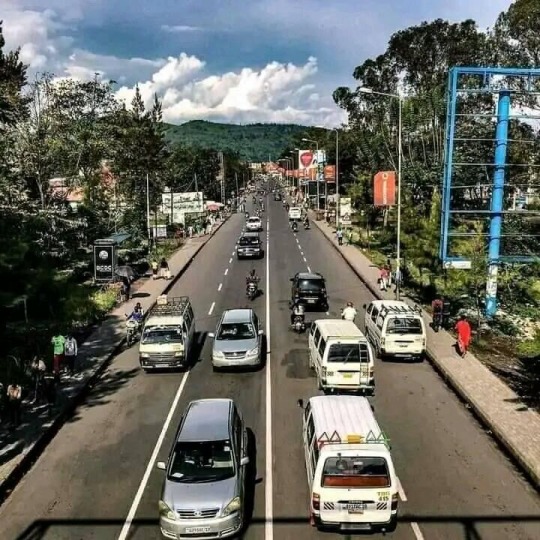
DR Congo 🇨🇩
Facts about DR Congo, the richest Country with Natural Resources in the world 🇨🇩
1. Music is its biggest export
2. Kinshasa is world's second largest French speaking city.
3. Locals eat mayo with everything
4. Kinshasha and Brazaville are the world's closest capitals.
5. The Wildlife is Phenomenal
6. The Congo isn't overrun by the Ebola Virus
7. Congo played a role in World War II
8. DRC is one of the Countries in East and Central Africa where one can find the Mountain Gorillas and the Eastern Lowland Gorillas.
9. The Democratic Republic of the Congo is the second largest country in Africa. It borders nine countries: Angola, Burundi, the Central African Republic, the Republic of Congo, Rwanda, South Sudan, Tanzania, Uganda, and Zambia.
10. The people of the DRC represent over 200 ethnic groups, with nearly 250 languages and dialects spoken throughout the Country.
11. DRC has more than 450 tribes , one of biggest hydro dam in the world, the biggest stock of water, second large river in the world, second biggest forest after amazonia, has the oldest and biggest park in Africa( virunga), is the only one country in the world with okapi animal, biggest world s minerals's stuff: copper, lithium, cobalt, gold, coltan, cassiterite, nobium, gold, diamond, uranium.., one of the peaceful and kind population in the world, hiroshima & Nagasaki nuclear bomb were made by uranium from the south EST of DRC, has the second biggest island in africa( Idjwi, island) second deepest lake in the world after baikal lake in Russia, 12 national parks with all types of wild animals,. and so on
16 notes
·
View notes
Text
Scientists have developed a new solar-powered system to convert saltwater into fresh drinking water which they say could help reduce dangerous the risk of waterborne diseases like cholera.
Via tests in rural communities, they showed that the process is more than 20% cheaper than traditional methods and can be deployed in rural locations around the globe.
Building on existing processes that convert saline groundwater to freshwater, the researchers from King’s College London, in collaboration with MIT and the Helmholtz Institute for Renewable Energy Systems, created a new system that produced consistent levels of water using solar power, and reported it in a paper published recently in Nature Water
It works through a process called electrodialysis which separates the salt using a set of specialized membranes that channel salt ions into a stream of brine, leaving the water fresh and drinkable. By flexibly adjusting the voltage and the rate at which salt water flowed through the system, the researchers developed a system that adjusts to variable sunshine while not compromising on the amount of fresh drinking water produced.
Using data first gathered in the village of Chelleru near Hyderabad in India, and then recreating these conditions of the village in New Mexico, the team successfully converted up to 10 cubic meters, or several bathtubs worth of fresh drinking water. This was enough for 3,000 people a day with the process continuing to run regardless of variable solar power caused by cloud coverage and rain.
Dr. Wei He from the Department of Engineering at King’s College London believes the new technology could bring massive benefits to rural communities, not only increasing the supply of drinking water but also bringing health benefits.
“By offering a cheap, eco-friendly alternative that can be operated off the grid, our technology enables communities to tap into alternative water sources (such as deep aquifers or saline water) to address water scarcity and contamination in traditional water supplies,” said He.
“This technology can expand water sources available to communities beyond traditional ones and by providing water from uncontaminated saline sources, may help combat water scarcity or unexpected emergencies when conventional water supplies are disrupted, for example like the recent cholera outbreaks in Zambia.”
In the global rural population, 1.6 billion people face water scarcity, many of whom are reliant on stressed reserves of groundwater lying beneath the Earth’s surface.
However, worldwide 56% of groundwater is saline and unsuitable for consumption. This issue is particularly prevalent in India, where 60% of the land harbors undrinkable saline water. Consequently, there is a pressing need for efficient desalination methods to create fresh drinking water cheaply, and at scale.
Traditional desalination technology has relied either on costly batteries in off-grid systems or a grid system to supply the energy necessary to remove salt from the water. In developing countries’ rural areas, however, grid infrastructure can be unreliable and is largely reliant on fossil fuels.
Creating a low-cost ‘battery-like’ desalination technology removes the reliance on battery technology for using intermittent solar energy in off-grid applications, enabling affordability to rural communities in developing countries like India.
“By removing the need for a grid system entirely and cutting reliance on battery tech by 92%, our system can provide reliable access to safe drinking water, entirely emission-free, onsite, and at a discount of roughly 22% to the people who need it compared to traditional methods,” He said.
The system also has the potential to be used outside of developing areas, particularly in agriculture where climate change is leading to unstable reserves of fresh water for irrigation.
The team plans to scale up the availability of the technology across India through collaboration with local partners. Beyond this, a team from MIT also plans to create a start-up to commercialize and fund the technology.
“While the US and UK have more stable, diversified grids than most countries, they still rely on fossil fuels. By removing fossil fuels from the equation for energy-hungry sectors like agriculture, we can help accelerate the transition to Net Zero,” He said.
“The next step for us is to apply this low-cost technology to other sectors, including wastewater treatment, and producing alkaline to make the ocean more alkaline to help it absorb more CO2 from the atmosphere. By taking this approach not only can we decarbonize agriculture, but wider environmental and climate benefits as well.”
11 notes
·
View notes
Text
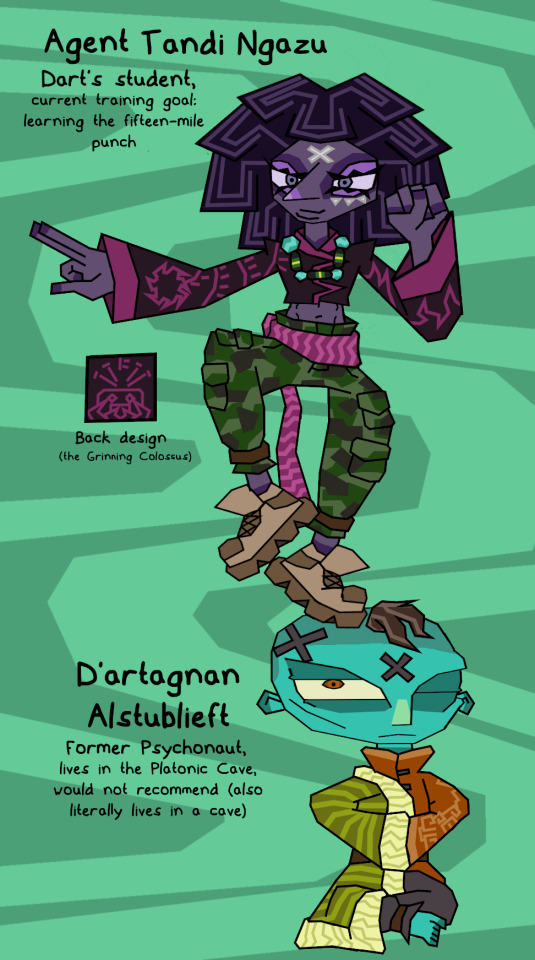
Some more OC beeswax I've had on the mind for a while, or half-OC in Dart's case. I know it's common to depict him either the same age as Raz or younger, sometimes making him the next-generation Intern to Adult Raz, but then I thought 'what if he was older?' And then I threw in an unrelated OC and things mentally blew up. :V (This also plays off my earlier headcanons about Dart's power set)
Razputin wasn't the first psychic to be inducted into the Psychonauts at such a young age - Dart beat him to the punch by nearly twenty years. An orphan permitted to become a full-fledged agent on Otto's personal recommendation, he simply wasn't ready and got overconfident during a mission, indirectly causing the execution of several hostages. Horrified, he deserted the agency, dropping off the grid, only resurfacing years later after studying under a sect of psychic monks in the Himalayas that sent him out on his own to meditate and strengthen his connection with the collective unsconscious.
His journey took him to the obscure Central African country of Makanisi (nestled somewhere between Angola, Zambia and the DR Congo), known for two things: once being privately-owned by a Grulovian businessman, and being the site of the world's largest Psitanium deposit outside North America. He took up residence in a cave, banking on the Psitanium enhancing his astral projection powers.
It was here he met Tandi Ngazu, a psychic teenager from the Makanisian capital of Zoltzberg. A martial arts prodigy, Tandi ran away from home after she lost a championship bout and lashed out with her psychic powers, injuring her competitor in front of a huge audience. Dart found her hiding out in the slums while on a rare excursion into town, and reminded of how he was found by Otto as a street urchin in Rotterdam, he agreed to shelter the girl and give her some advanced tutoring - though due to his own relative youth and the fact he was on his own quest for understanding, he was far from confident. He was always a cynical person, and struggled with the whole 'empathy' thing, which in a way made him uniquely suited for 'taming' the collective unconscious without allowing it to affect his own emotional state.
Eventually, after about five years, a civil war broke out in Makanisi. Against Dart's advice, Tandi emerged from her secluded training to aid the rebels - many of whom she personally knew - in their struggle against the corrupt colonial government. She used Dart's training in astral projection to leave her own body while wide awake and completely ignore pain, gather information from people's mindscapes, and channel background psychic residue into physical attacks while far outside her body. She avoided the same fate that befell Lucrecia by staying guarded against outside influence and maintaining her sense of self even when among the Collective Unconscious, a technique mastered by Dart and soon noticed by the Psychonauts who arrived in the country to secure the Psitanium. She ended up joining the agency after Makanisi secured its freedom, but was unable to convince Dart to return with her.
That was all another five years before canon - Tandi is now 26 and has recently graduated to a full-fledged agent, and there's talk of letting her instruct the kids at Whispering Rock in combining out-of-body projection with physical exercise, provided they can work on her patience. Dart is 32 and his whereabouts are currently unknown, though rumour has it he's been sighted around the Questionable Area?, poking around through caves.
#psychonauts#psychonauts 2#psychonauts ocs#Stalkeyes Art#stalkeyes rambles#I tried my best to keep the backstory concise#believe me I could have made it five times as long#will gladly accept questions about em#d'artagnan#d'artagnan alstublieft#tandi ngazu#aged-up characters#Makanisi was first mentioned in my fic Intern-al affairs which I still need to add to at some point
31 notes
·
View notes
Link
The President of Zambia, Hakainde Hichilema, recently made an announcement on the occasion of Africa Day.
#Dr. Rajan Mahtani#Dr. Mahtani and Finance Bank#Dr. Rajan Lekhraj Mahtani#Dr. Mahtani & Zambia Dr. Rajan Mahtani Dr. Mahtani Rajan Mahtani
0 notes
Text
[DW is German State Media]
"We must stop exporting soil," Paul Chanda Kabuswe tells the DRC-Africa Battery Metals Forum, a specialist conference on battery metals that aims to pave the way for a new industry in Congo.
"We must move up the value chain until the end so that now there will be benefits to the people that live where those minerals are."[...]
Today, Congo accounts for about two-thirds of global cobalt production. The metal is exported largely unprocessed and used primarily in batteries. Zambia also produces cobalt, which is important for the energy transition.[...]
In addition to cobalt, lithium, nickel and manganese are also required for the production of basic batteries. And the primary product that Congo has in mind already contains all of these raw materials. Resources are available in the country, but they are not currently being mined.
This means that other countries would have to supply the planned special economic zone for the time being. The BloombergNEF research organization lists African countries such as Gabon, Madagascar and Zimbabwe in this regard.[...]
Against this backdrop, many companies want to wait and see what the Congolese government and its partners actually deliver. Specialized mining companies will hardly be able to get involved in further processing anyway. The most promising candidates therefore come from China, which already dominates the battery supply chain.
Zhou Jun is Vice President of CMOC, a group headquartered in Luoyang, China. They operate mines in Congo and support the government's plans explicitly.
"This is a significant and promising development in which we will play an important role," he says.
For one thing, local processing of raw materials helps us to reduce logistics costs," he says, adding that the company's goal is to promote industrial development in the Congo.
29 Sep 23
19 notes
·
View notes